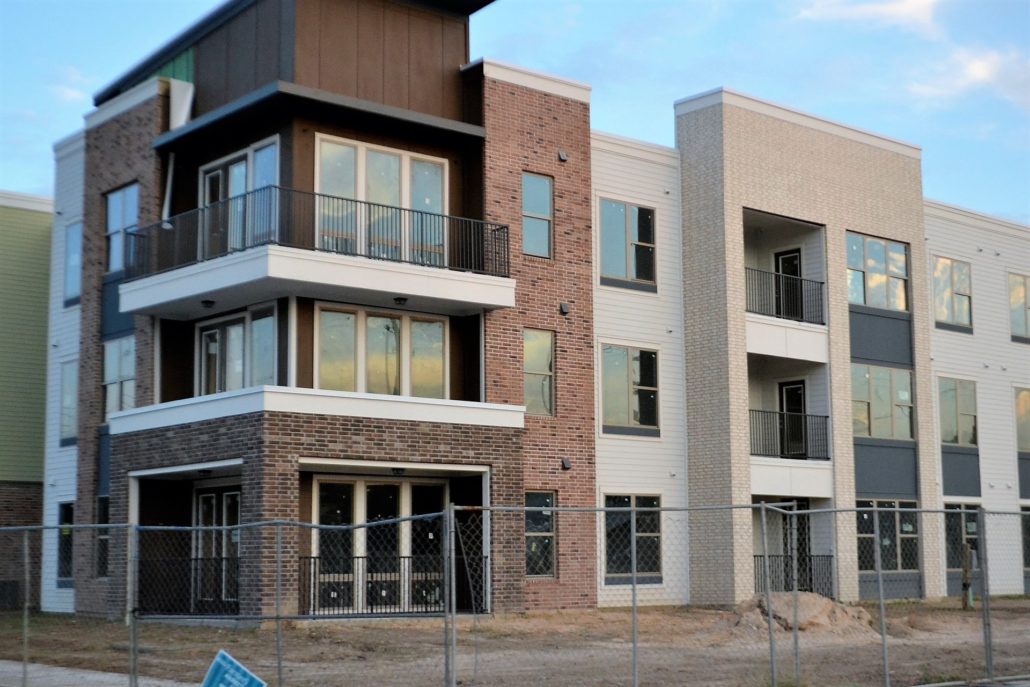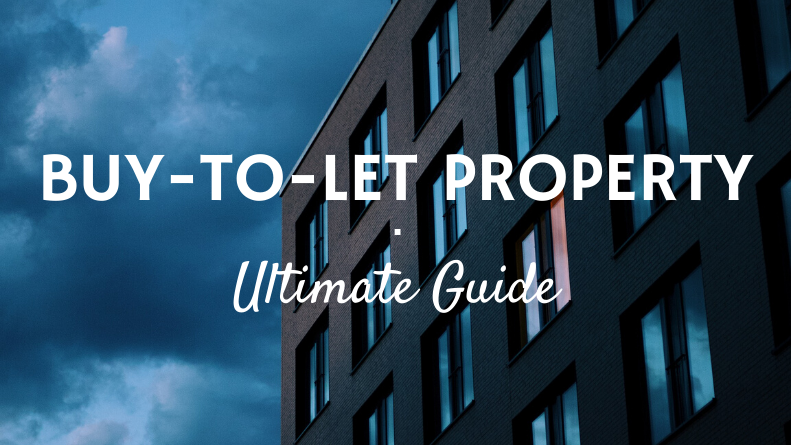Buy-to-Let Property Investment | Ultimate Guide
A buy-to-let property investment is one of the most common ways investors can turn a profit within the UK’s lucrative property market. If you are thinking about making a buy-to-let investment, or perhaps could benefit from a recap into the finer details of buy-to-let investing, we’ve got you covered. Read on to learn more about the secure investment that is buy-to-let.
-
What is a buy-to-let property investment?
-
Buy-to let in 2021/22
-
Main points to consider
-
-
Types of buy-to-let investments
-
Residential buy-to-let
-
House in multiple occupation (HMO)
-
Buy-to-sell (Flipping)
-
Student accommodation
-
Off-plan investing
-
-
Financing a buy-to-let property investment
-
-
Other costs
-
Buy-to-let mortgage
-
-
Buy-to-let insurance
-
Building insurance
-
Contents insurance
-
Landlord liability insurance
-
-
Responsibilities of a landlord
-
Tenancy agreement
-
Safety standards
-
Right to rent
-
Protecting the tenant’s deposit
-
Repairs
-
-
Choosing the right tenants
-
Job stability
-
Background checks
-
Communication assessment
-
Encouraging open dialogue
-
Don’t rush things
-
What is a buy-to-let property investment?
There are many different and often confusing investment opportunities for investors to consider, but the buy-to-let property investment concept is a simple one. On a basic level, the idea is that you purchase a suitable property for the purpose of renting it out to tenants for the return of monthly rental income. Buy-to-let property investments are very popular with investors for one major reason, property represents a tangible asset class comprised of bricks and mortar.
Investors can receive a return on investment (ROI) from two primary sources: monthly rental income and capital appreciation (sometimes called capital growth). Rental income provides investors with a passive income, something which can be defined as an income that continues even after the work is complete, such as royalties from a book or film, for example. Capital appreciation or capital growth, on the other hand, is the return gained from the value of property rising over the years of ownership.
The following example shows how powerful capital growth can be as part of your buy-to-let property investment strategy. £77,000 is what the average property would cost in London in 1996. 25 years later, in 2021 – the average mortgage window – the same property would cost you more than £488,000 to buy, a staggering 633% increase in value.
As you can see, there is a trend of property prices increasing over time, despite any temporary dips in the market. Therefore, for those who adopt the capital appreciation investment strategy, long-term investing is the key to success.

Once you have purchased your buy-to-let property and start to rent it out, you then become a landlord. This prestigious title comes with great benefits as well as responsibilities, such as ensuring that the property is safe and meets all legal requirements (more on this later).
Depending on your financial situation, savings, investment strategy, investment goals and vision, you could either purchase a buy-to-let property outright as a cash purchase or you can apply for a buy-to-let mortgage, a specialised loan tailored for buy-to-let purchases.
Once you have purchased the property of your choice, after conducting all the necessary research into things like location and projected rental income, and once any necessary repair work or decorations have been done, you will need to make sure that the basic legal requirements are met such as:
- Gas safety certificate
- Energy Performance Certificate
- Property has fire alarms and carbon dioxide detectors
Adopting a business mindset from the start will be helpful in your exciting journey of becoming a landlord and buy-to-let property investor. Look at it as buying a people-orientated business, and the tenants are your customers that you need to treat well and keep happy. The more serious and professionally minded attitude you adopt, the better your chances of making it a success will be.
Indeed, a happy tenant is likely to stay in your property, thus reducing the likelihood of void periods, this being the times when your property is empty and not bringing in rental income.
Buy-to let in 2021/22
Buy-to-let investments have long been an important investment asset of any serious investor for very good reason, not least because they offer a degree of stability and assurance that other investment asset classes often don’t.
The UK has a long-running housing crisis, which means there is a huge shortfall in the number of houses required to meet demand, and the housing affordability and shortage problem only seems to be getting worse as the government and private sector work together to find innovative solutions.
In 2007, there were about 2.8 million households living in private rented property in the UK, and by 2017, that number jumped to 4.5 million households, an increase of 63% in just ten years. Due to the lack of available housing – a complicated matter that involves numerous factors – the number of people looking for private rented accommodation is only increasing year on year.
Main issues to consider
Statistics compiled by the Office of National Statistics show clearly just how the demand for privately rented property has increased.
- There was an increase of 2.8 million households over a ten-year period (2007-2017) going into private rented accommodation, an increase of 63%.
- Younger demographics are more likely to be renting privately in the UK, with younger renters comprising 25 to 34 years old. This represents the largest category of households and more than 35% of renters.
- However, due to issues like the increasing severity of the housing crises and problems saving for deposits, the average age of renters is increasing. In the same period (2007-20017), the proportion of households with renters aged 45 to 54 increased from 11% to 16%, at the same time while those aged 16 to 24 reduced from 17% to 12%.
Types of buy-to-let investments
There are many different types of buy-to-let property investing and this can seem a little confusing when deciding the best route to take. Listed below are the main ones to be aware of, which constitute the majority of many investors’ portfolios. Depending on your investment strategy and goals, each one of these buy-to-let investment opportunities will have to be weighed up against what you wish to achieve with buy-to-let investing.
- Residential buy-to-let
- House in multiple occupation (HMO)
- Buy-to-sell (Flipping)
- Student accommodation
- Off-plan investing
Residential buy-to-let
A popular choice for many buy-to-let property investors is the residential buy-to-let option. Many new property investors have started off by learning the ropes with residential buy-to-lets, a good option for any portfolio, for newbies and seasoned investors alike.
The concept is straight forward: an investor purchases a house and then rents it out to tenants to receive monthly rental income. When this has been achieved, the investor then becomes a landlord owner, usually of either a freehold or leasehold property.
After the investor has paid the monthly mortgage repayments (if not paid cash for it), the investor then keeps the profits. In addition to the profits from rent, the property will also likely increase in value and yield capital growth. Over the period of the average mortgage, capital growth can be substantial.
The landlord typically signs a tenant agreement with tenants for 12 months. In terms of managing the investment property – collecting rent, maintenance, repairs, etc.-the investor will decide whether to manage it themselves or hire a professional management company to do it for them on their behalf.
House of multiple occupation (HMO)
A house of multiple occupation (HMO) is a house where each bedroom is rented separately to different tenants. This investment type can yield investors lucrative gains with the right property in the right location.
In major cities like London and Liverpool, HMOs are quite common as rents are normally very high, leaving many young professionals seeking a more affordable way to live in the city.
However, HMOs come with more complications than a basic residential buy-to-let, and investors need to be aware of them before embarking on this route. The first obstacle that potential investors will face is securing a mortgage since lenders generally treat HMOs differently from regular buy-to-lets.
Furthermore, the landlord will have to familiarise themselves with the stringent regulations that govern this area of the rental market, especially in terms of health and safety legislation. Necessarily, this will also mean that landlords will have to be prepared to spend more time on managing the property.
Lastly, when calculating the rental charges for tenants, the landlord will have to decide if the bills are all included in the rent, as is often the case. All costs will have to be accurately taken account of to make sure you stay within budget.
Buy-to-sell (Flipping)
This investment type centres around buying a home – usually one that needs repair work done – and improving it for a quick turnaround sale.
This type of investment opportunity requires the investor to have a good working knowledge of the property market as well as proficient knowledge of renovation work, or at least have access to a competent network that does.
Investors involved with buy-to-sell properties typically must spend a lot of time managing the renovation projects and being available throughout the process to oversee them. Because this strategy involves a rapid turnaround, a small dip in the market may necessitate the investor holding the property longer than anticipated. Of course, investors can also choose to rent out the property out once renovations are made as part of a traditional residential buy-to-let.
Student accommodation
Purpose-built student accommodation can often be a great investment opportunity. Comprising both domestic and overseas students, demand for student accommodation is very high due to the UK’s high student numbers, with over two million enrolled at any one time.
Student accommodation has improved a lot over the years as the standard of accommodation demanded by students has heightened, resulting in students and their parents willing to pay extra.
Purpose-built student accommodation is usually cheaper to purchase than a standard buy-to-let and comes with some tax advantages, so is therefore a possible investment option for those starting off with a lower budget.
Off-plan investing
Off-plan investing involves purchasing a property that has not yet been built. In real terms, this often means that you purchase a property before the construction phase starts, but it can also involve purchasing after construction has commenced.

A significant benefit of investing in off-plan properties is that off-plan properties are often bought at a discounted price compared to when they are completed. This provides a strong incentive to investors, making it a very popular choice to build healthy portfolios.
Two fees are typically required at the early stage:
- Reservation fee
- Deposit
The deposit required will depend on the developer, but typically ranges anywhere between 10% and 20%, but can be as low as 5%.
Consider the power of off-plan investing by looking at the following scenario. You secure a £200,000 off-plan investment property with a 10% deposit (£20,000). During the build time, there are no mortgage fees to pay, or any cash flow worries. By the time the construction is completed, and you are handed the keys, the property has increased in value by 10%. Under this scenario, easily achievable in a rising market, you have doubled your money before you have even finalised.
Off-plan investing represents a very good investment opportunity and one that has a place in any property investment portfolio. The key to successful off-plan investing is to find the right opportunity and developer, one with a proven track record.
Financing a buy-to-let property investment
- Standard costs
- Buy-to-let Mortgage
Standard costs
It’s important to remember that purchasing the buy-to-let property itself is not the end of the costs that you will incur. From the start of being in the position to rent out your property, there are other costs that you will need to be prepared for and knowing about them in advance will put you in a good position to calmly anticipate them.
- Solicitor and mortgage lender fees. You can reasonably expect to have to pay up to about £2,500 for these fees. This also covers surveys.
- Stamp duty land tax. Contrary to what many think, stamp duty is not a tax on the property itself, but on the land that the property is built upon. The stamp duty charge will be determined by the purchase price of the property. Up to £125,000, the cost is zero, and then it starts at 2% from £125,000 up to £250,000.
- Decorating and repair work. Depending on the condition of the property, you may have to have some funds put aside for decorating and repair work before the property is fit for renting out. What work that is overlooked will likely result in disgruntled tenants and calls to do the work anyway.
- Furniture. Sometimes investors will need to arrange for the property to be furnished with fire and other safety standards. To save costs, this can be done with purchasing “furniture packs” that cover everything.
- Gas safety inspection and Energy Performance Certificate. Although not a huge expense, these costs need to be considered. For landlords of a HMO, you are legally required to have an electrical safety inspection done on the property every five years.
- Service charge. If purchasing a leasehold property, an annual cost to cover the communal areas, such as stairwells and shared gardens.
- Ground rent. If purchasing a leasehold property, this is a yearly minimal fee to be paid by leaseholders to the freeholder. If you are looking at purchasing a leasehold property as your buy-to-let property investment, you will need to ascertain what these charges are and factor them into your calculations. This should also include any significant anticipated costs that the freeholder is expecting down the line, like replacing the roof.
Buy-to-let mortgage
Over the last five years, buy-to-let mortgage rates have been steadily falling, indicating a good time to purchase a buy-to-let property. Five years ago, the average mortgage rate was 3.99%, and now it stands at about 3.1%.
If you are not able to pay cash for the property, you will likely be financing your property with a buy-to-let mortgage. Residential mortgages are for when you are planning on living in the property. Successfully securing a mortgage depends on several factors, such as the state of the housing market and lender confidence.
To have the best possible chance of securing a mortgage with a lender, bear in mind the following requirements that they will likely be looking for.
- Instead of your salary, rental income will be what a lender will consider as your primary income source. As a rule of thumb, the rental charge on the property should be a minimum of 125% of what you are paying for the mortgage. To illustrate with an example: mortgage repayment comes to £700 per month, then you would have to be charging rent of at least £875. Note that expected rental income will have to be verified by independent sources.
- Lenders usually require larger deposits for buy-top-let mortgages compared to standard mortgages. You should expect to have at least about 25% to 40% of the deposit to pay down in advance. Of course, the more that you can pay upfront in deposit, the less you will have to borrow and the less interest you will end up repaying. Furthermore, the greater deposit you can find may result in finding a better mortgage deal with a lender.
It is prudent to do extensive research and shop around for the best mortgage deals. Meeting with and discussing all your mortgage options with a specialist buy-to-let mortgage advisor is a good idea; it will help you gain a clear idea of what you can afford and what’s involved in the process. You may discover, for instance, that your large sum of savings could even be used to put a deposit down on more than one property.
Other things to consider
Mortgage lenders will want to know if you have any other income, other than the expected rental income and, if so, how much it is. Some buy-to-let investors plan to leave their jobs once they start to receive rental income, as part of their investment strategy. If this is the case, your mortgage advisor will want to know this.
Buy-to-let mortgages are considered by lenders to be higher risk compared to residential mortgages because the investor, in many cases, is reliant upon rental income to cover the monthly mortgage repayments. As a result, buy-to-let mortgages can be more expensive. One possibility for mitigating upfront fees is asking the lender if any of the fees can be absorbed into the monthly repayments, which some may be able to accommodate.
However, the good news is that by taking out rent guarantee insurance, you may be able to secure a better deal, and have peace of mind for any void periods when you haven’t got a paying tenant in your property. If the rent guarantee insurance is something that you would consider, make sure you speak with the insurance provider first about what’s involved because it does come with conditions that you may consider too restrictive, such as possibly not allowing benefits recipients to rent out the property, often a huge source of tenants for buy-to-let landlords.

Another important thing to realise with buy-to-let mortgages is that they are often interest only mortgages. This is often considered a great benefit to most investors as constituting an important part of their investment strategy, having only to repay the interest each month, greatly reducing the monthly repayments, and then the final repayment for the property at the end of term.
Think about it like this: You purchase a house for £200,000 and only pay the interest each month at a much-reduced repayment than if you were also paying back the price of the property. During the mortgage term, because you are repaying only the interest, you can save up from the rental income and perhaps even invest in more properties with the savings. In the meantime, by the time that you make the final capital repayment 25 or so years later, your £200,000 property could now be worth £300,000 but you will only be paying £200,000, the original asking price.
Of course, it’s worth emphasising that you will need the full amount ready to pay off the final payment once the mortgage term has ended, something that shouldn’t be a problem for prudent investors.
Buy-to-let insurance
Buy-to-let insurance, sometimes called “landlord insurance,” is insurance cover for buildings and contents as well as landlord liability.
Building insurance
Mortgage lenders will often require that landlords take out building insurance as a condition of the mortgage. This insurance covers your property in case of damage or being destroyed and in need of repair or being rebuilt.
To get the right cover for your property, it’s crucial to submit the correct rebuild value on the insurance form. This is not the same figure that you paid for the property, so may will likely need to get this information from a chartered surveyor.
Content insurance
As the title hints at, this insurance will cover your furniture within the property. For landlords that will not be offering a fully furnished property to let, it’s still worth considering a limited contents insurance policy to cover things like carpets, curtains, and white goods. For tenants’ own belongings, make sure that they are aware they are responsible for insuring them.
Landlord liability insurance
This insurance covers injury or death to both tenants and visitors on the property. Although this level of insurance is typically discretionary, it may be a requirement to have minimal cover in place for some instances, such as with students or local authorities.
Responsibilities of a landlord
If you are thinking about investing in buy-to-let properties and becoming a landlord, you are probably wondering what the responsibilities that come along with it are. While it is true that there are huge benefits from investing in property, to help you make a success of it and enjoy the journey that much more, being aware of your responsibilities is a must.
The landlord responsibilities will depend on the type of property you buy, with HMOs having many more than standard residential buy-to-lets, for example. The good news is, however, that with some research and effort, you can easily navigate your way through the responsibilities of being a landlord. Set out below are some of the most important ones to be aware of.
Tenancy agreement
Holding the title of landlord means you have numerous legal responsibilities that you need to be aware of. To start with, your tenants’ legal right to live in your property is guaranteed by a tenancy contract and that their deposit is protected.
The most common type of tenancy contract is the assured shorthold tenancy (AST), which affords the tenant a legal right to live in your property for a stipulated duration, or on a rolling term.
The AST tenancy agreement should have a set period, typically 6 or 12 months. Details of the contract should include things like the amount of rent due by the tenant each month, who has the responsibility for repairs, details about notice of eviction, when the rent can be increased, how long the tenancy duration is for, and notice of the tenant’s right to have their deposit protected.
Safety standards
To ensure that tenants are safe at your property, you must ensure that the following requirements are met.
- A smoke alarm must be installed on every floor of the property.
- In rooms where there are coal fires or a wood burning stove (primarily older properties), – a carbon monoxide detector must be installed.
- For every gas appliance inside the property, there must be a gas certificate to show that it is safe and meets the required standards.
- Furniture that is provided by the landlord must meet fire safety standards with the appropriate labels on display.
- All electrical appliances must be safe, as can be shown with Portable Appliance Testing (PAT).
- The tenant’s water supply must be checked to make sure it is working properly and prevents Legionella, a pneumonia-like illness caused by harmful bacteria.
Right to rent
Since 1 February 2016, to ensure strict adherence to immigration laws, landlords have the legal responsibility to make sure that their tenants have the legal right to reside in the UK. This responsibility should be taken seriously as the penalty for not adhering to this can be an unlimited fine or up to 5 years in prison.
Protecting the tenant’s deposit
Most tenancy agreements are AST and landlords must make sure that the tenant’s deposit is protected with a deposit protection scheme that has been approved by the UK government.
Protecting the tenant’s deposit is also beneficial for landlords because, for landlords that do not protect the tenant’s deposit in this way, they may discover that ending the tenancy is more difficult.
Once the tenancy term comes to an end, deposits must be repaid in full, barring any unresolved disputes about property damage or unpaid rent.
Repairs
For repairs to the structure of the property and exterior, this responsibility falls mostly with the landlord. This covers things like walls, roofs, chimneys, guttering, and drains. Depending on the tenancy agreement, it could also include things like the boiler or a cracked window. In addition to this, it’s the landlord’s responsibility to ensure that the equipment which supplies the water, gas, and electricity are in good and safe working order.
Choosing the right tenants
OK, so now you have your buy-to-let property investment, and you are ready to start receiving rental income; all you need are tenants—good tenants. But how do you find “good” tenants and what criteria are helpful in choosing them?

It often helps to have a specific type of tenant in mind for your property. Students, families, and young professionals each have different tastes and requirements when they are looking for properties to rent. It can help choose the type of property you are looking for and the right location for it.
In addition to the requirement for right to rent mentioned above, there are other useful things to look for in choosing good tenants for your property
Job stability
As a general guide, make sure that your tenant’s yearly income is at least 30X what the rent is. As an example, rent for £800 requires the tenant to be earning at least £24,000 per year. However, some landlords prefer an even greater margin for manoeuvre to make sure that the tenant is still able to live a comfortable existence.
For self-employed tenants, ask for proof of income from an accountant, or alternatively, you can ask for tax returns or bank statements.
Try and find a tenant that is planning to jump ship too soon. If they ask for a 12-month tenancy or longer, that contains no break clause, and in full-time employment, then things are looking good.
It’s also a good idea to ask for at least a 6-week deposit and an upfront payment via direct debit. Since late rental payments can be an issue, this will ensure that they will pay on time. If they are good with a 6-week deposit, then their financial management looks good.
Background checks
You can hire a company to do this for you, and letting agents are very good at performing this task. It involves credit checks, checking with previous landlords, affordability, and land registry checks to see if the perspective tenant owns property.
Communication assessment
It’s true that first impressions are important. Someone turning up for an appointment late is not a good start and won’t leave a good impression on the landlord. Furthermore, a scruffy and unkempt appearance may be an indication of how well the property will be kept when they are living there.
When you talk with them, you will get an impression of their personality and how well you think you will get on with them. Do they, for example, give you the impression that they could be difficult to deal with?
Another possibility is looking at their social media profile if they have one. If they post lots of pictures or videos that hint at being regular partygoers, you may want to consider if this is the right tenant for your property.
Encourage open dialogue
Many tenants are reluctant to notify the landlord when something happens because they are concerned about being blamed or losing their tenancy. By reassuring tenants that it’s OK to let you know if something goes wrong, it will keep you in the loop for needed remedial work, something that can build up and become more expensive if not rectified right away.
Don’t rush things
It may be tempting to jump right in with the first person that ticks all the boxes, but as many landlords will tell you, listen to your instincts and gut feelings. If something doesn’t quite feel right, then sit down with them and ask questions until you are satisfied. Like HR managers that conduct hundreds of job interviews, after a while, you will get to know people better and get a feel for the person you are speaking with.
Hopefully the above information will prove helpful in ascertaining whether a buy-to-let investment opportunity is right for you. If you would like more information on investing, get in touch with us via our contact page.
ARE YOU READY TO START INVESTING?
Subscribe to our mailing list now for exclusive deals, investment guides and
the latest information from the property market.
ARE YOU READY TO START INVESTING?
Subscribe to our mailing list now for exclusive deals, investment guides and the latest information from the property market.







